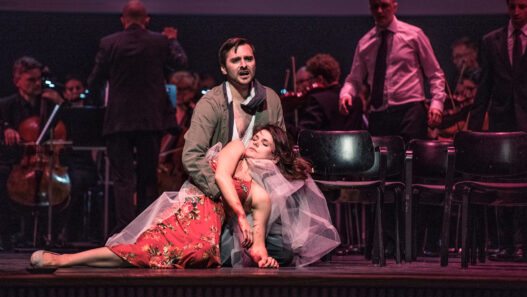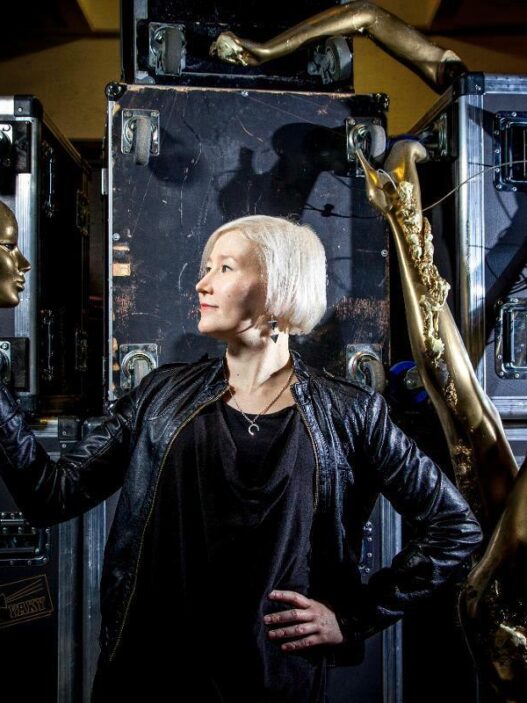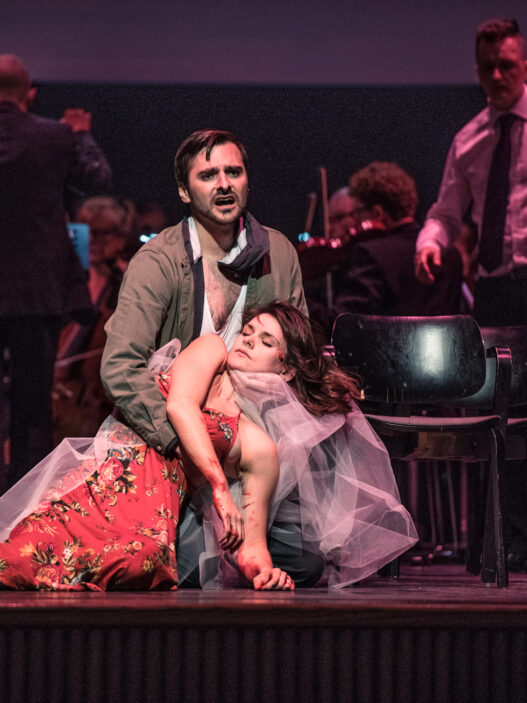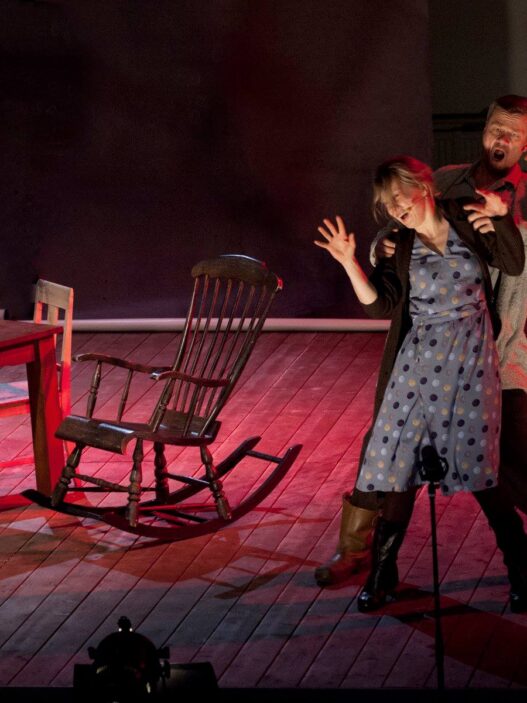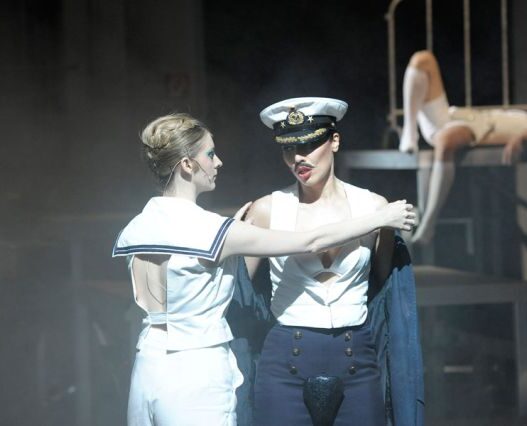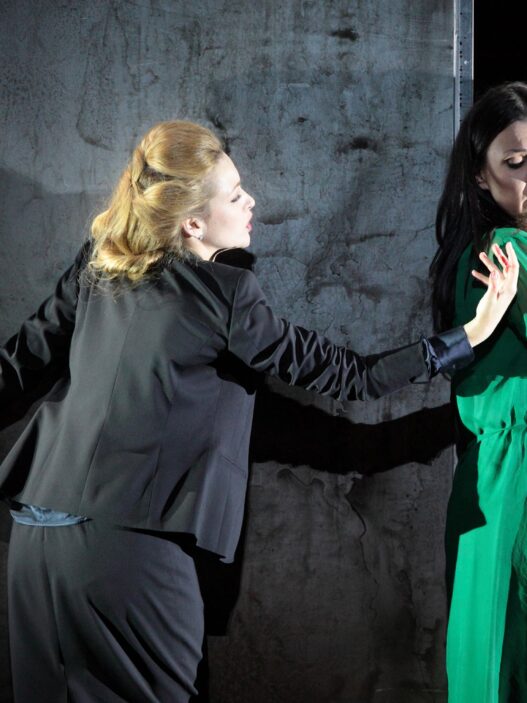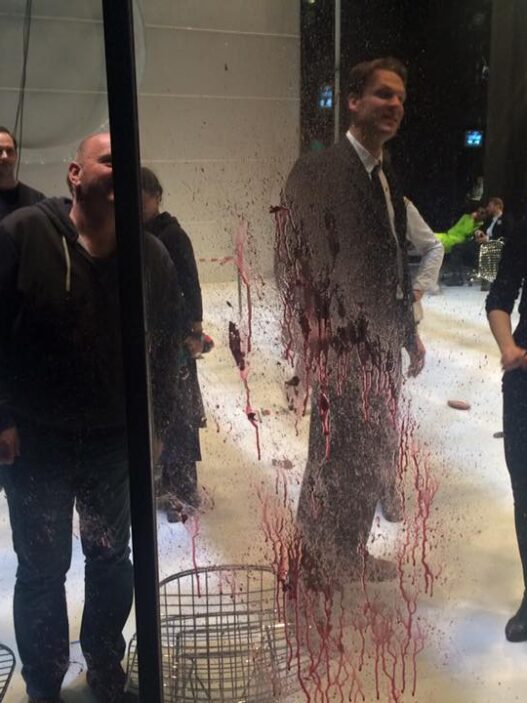The recent study from Akademie für Theater und Digitalität and European Theatre Convention is the first study to reflect the digital development in the performing arts, especially in European theatres, in 2019-2022. This study is especially focused on drama theatres, but I see that these results resonate also with opera houses and other performing arts organizations. The study is written by Dr. Katie Hawthorne, and it is valuable reading, with very important notions on the development and direction where digital theatre is going.
Berliner Philharmoniker started their Digital Concert Hall in 2008, and in 2009 Metropolitan Opera started their The Met: Live in HD live-stream series. Many opera houses and theatres soon followed, and live-streaming became the standard way of doing digital opera and theatre. The diversification of digital theatre had started before Covid restrictions and lock downs took place, but the surge of various digital theatre productions that were created during the 2020-2022 in a time of isolation was fast and intense.
Terminology of digital theatre
In this study, Dr. Katie Hawthorne divides digital theatre into three distinct sections:
• “Digitally distributed theatre is used to describe theatre that is broadcast from the stage to remote audiences, including live-streams, simultaneous broadcasts, and broadcasts of pre-recorded performances.
• Digitally mediated theatre describes the integration of digital technologies within a performance to mediate the audience’s experience and could, for instance, involve the use of smartphones or tablets.
• Digitally located theatre is theatre which takes place in a digital-first location, such as performances which are created specifically to be experienced on Zoom, or in virtual reality environments.”
Often times when we speak or write about digital theatre or digital opera, we speak about live-streaming only. What I find intriguing is that in this study the theatres reported that the “most successful” way of doing digital theatre was not digitally distributed but digitally mediated theatre. This form is also considered “the most highly regarded type of digital theatre in terms of creative expression and artistic innovation”. The theatres reported digitally mediated theatre to be a “success” on these terms, and the numbers grow from 60% of theatres in 2019 to 70% in 2021. The number of theatres reporting “artistic innovation” increased each year, growing from 60% of theatres in 2019 to 70% in 2021, which supports the fact, that digitally mediated theatre might be a right path to take artistically. This confirms the view that I have gathered during my time on the jury of Akademie Theater und Digitalität, where I find that most of the fellowship holders are focusing on many diverse ways of doing digitally mediated theatre.
Observations on digitally mediated theatre
According to this study digital theatre grew by 772% between 2019 and 2020 and remained stable in 2021, based on ticket sales. The most used form has been digitally distributed theatre (live-streaming), but the strong growth in digitally mediated theatre (especially in 2019-2020 ) which reflect the experimentation phase done in the theatres. Also, the aforementioned “success” that some theatres have reported, suggests that digitally mediated theatre could be a form to focus for artists, theatre staff and theatres’ artistic leadership team. What could this mean for the theatres or opera houses focusing mostly – or solely – on live-streaming? Is it necessary for theatres to do all kinds of digital theatre? Could some theatre and opera houses move from live-streaming to focus on more digitally mediated productions?
The rising amount of digital theatre productions has not only positive sides, but also there is apprehension also against digital theatre, which is understandable, because the arrival of digitality in a theatre or opera house means that the staff are given the task to learn new skills. This should and could be seen as an opportunity, not only a threat. A digital road map and proper planning and strategy for a true implementation of digitality into a theatre or an opera house are crucial.
Development of digital theatre technology
The use of digital technology differs quite a lot between various theatre houses, as the study shows. Where some theatres and opera use different kinds of CRM systems (not all though), or system software such as Tessitura, Diese or Theasoft GmbH, (the use of CRM is not the focus in this study, that would be the subject of another study, just my own notion), many have vast differences on the level of digitality between theatres. It seems, that many theatres cannot calculate the audience that they reach with digital content, which suggests that they are not using any kind of CRM system that would keep track of the audience segment that is interested in digital theatre. This is sad, because that would be important information to know when planning digital productions. This has to do with the fact that many theatres give digital theatre performances for free, and only a part of the theatres sell tickets for their digital theatre events. The ones selling tickets also are more content with the results of digital theatre, which makes sense, as they reach more audience and are doing financially more stable productions than the theatres who are giving the digital performances for free.
This study shows that some of the theatres were already investing in digitally produced theatre before Covid and some of the theatres seem not to have any kind of CRM systems or do any digital productions, and therefore were not interested or even opposed digital theatre. The reason some of the opposing theatre claimed that the audience has “screen fatigue” – which this study’s results does not seem to fully support.
Financing digital theatre
Financial investment, customer revenue, and digital rights were among the concerns that come forth in this study. It seems that financing is considered challenging with such a new way of producing theatre. There also seems to be a need for bigger financial investment for longer term planning, customer revenue, and creating lasting digital productions. 35% of the theatres that make digital productions report that productions costs are challenging, then again 26.3% of the theatres report that hybrid programming is “financially beneficial”.
Conclusions
Digitality is going to alter the way we work with opera and theatre, whether we like it or not. It is much better to start working with digitality – not against it – as soon as possible. This study from ETC is the first one on this scale focusing on researching the state and direction of digital theatre, and there are many interesting results to point out. It sheds light to the directions where the theatres are going and where not. This could mean, that the theatres that are open to digitality will further their digital operations in the coming years, and the theatres that are not taking even the first baby steps towards digitality are left behind in the dust. The theatres that oppose digitality might find themselves in a situation where the industry and audience changes around them, and they have to step up fast.
What I find reassuring and inspiring how many theatre strongly believe that digital theatre is a great opportunity for artistic innovation, connecting with broader audience than before, and establishing theatre in the digital sphere. I strongly suggest reading Dr. Katie Hawthorne’s study, as it offers a lot of information and notion on the current state of digital theatre in Europe.








